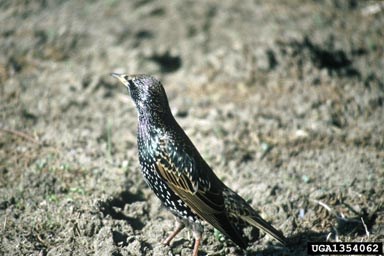
Lee Karney, US Fish and Wildlife Service The European Starling, Sturnus vulagris, was introduced to Central Park, New York City, in 1890 in an attempt to introduce all the birds found in Shakespeare's works to America. Hundreds of birds were released by a group called the American Acclimitization Society. (They also introduced the House Sparrow.) The Starling, a resourceful and adaptive species, quickly became one of the most widespread birds in North America. Starlings can be found in almost any environment, from urban areas to landfills to woodlands. Woodlands are where they become a nuisance. It is there that they roost in the hollowed cavities of trees that would normally serve as homes for native species, like the Eastern Bluebird and sapsuckers. In addition to displacing native species, Starlings can be a nuisance in agricultural situations by destroying crops. |
Last updated: April 27, 2020
